Do High-Voltage Power Transmission Lines Affect Forest Landscape and Vegetation Growth: Evidence from a Case for Southeastern of China
Abstract
1. Introduction
2. Materials and Methods
2.1. Study Area
2.2. Data Sources and Pre-Processing
2.3. Calculation of the NDVI
2.4. Landscape Classification
2.5. Calculation of Landscape Metrics
3. Results and Discussion
3.1. Edge Habitat Impacts of the High-Voltage Power Transmission Lines
3.2. Effects of HVPTL on Forest Landscape Fragmentation
3.3 Effects of HVPTL on Vegetation Growth Dynamics
4. Conclusions
Author Contributions
Funding
Acknowledgments
Conflicts of Interest
References
- Bamigbola, O.; Ali, M.; Oke, M. Mathematical modeling of electric power flow and the minimization of power losses on transmission lines. Appl. Math. Comput. 2014, 241, 214–221. [Google Scholar] [CrossRef]
- Cain, N.L.; Nelson, H.T. What drives opposition to high-voltage transmission lines? Land Use Policy 2013, 33, 204–213. [Google Scholar] [CrossRef]
- Qin, X.; Wu, G.; Ye, X.; Huang, L.; Lei, J. A Novel Method to Reconstruct Overhead High-Voltage Power Lines Using Cable Inspection Robot LiDAR Data. Remote Sens. 2017, 9. [Google Scholar] [CrossRef]
- Wu, S.; Di, G.; Li, Z. Does static electric field from ultra-high voltage direct-current transmission lines affect male reproductive capacity? Evidence from a laboratory study on male mice. Environ. Sci. Pollut. Res. 2017, 24, 18025–18034. [Google Scholar] [CrossRef] [PubMed]
- Soini, K.; Pouta, E.; Salmiovirta, M.; Uusitalo, M.; Kivinen, T. Local residents’ perceptions of energy landscape: the case of transmission lines. Land Use Policy 2011, 28, 294–305. [Google Scholar] [CrossRef]
- Xu, K.; Zhang, X.; Chen, Z.; Wu, W.; Li, T. Risk assessment for wildfire occurrence in high-voltage power line corridors by using remote-sensing techniques: A case study in Hubei Province, China. Int. J. Remote Sens. 2016, 37, 4818–4837. [Google Scholar] [CrossRef]
- Luken, J.O.; Hinton, A.C.; Baker, D.G. Forest edges associated with power-line corridors and implications for corridor siting. Landsc. Urban Plan. 1991, 20, 315–324. [Google Scholar] [CrossRef]
- Tempesta, T.; Vecchiato, D.; Girardi, P. The landscape benefits of the burial of high voltage power lines: A study in rural areas of Italy. Landsc. Urban Plan. 2014, 126, 53–64. [Google Scholar] [CrossRef]
- Doukas, H.; Karakosta, C.; Flamos, A.; Psarras, J. Electric power transmission: An overview of associated burdens. Int. J. Energy Res. 2010, 35, 979–988. [Google Scholar] [CrossRef]
- Porsius, J.T.; Claassen, L.; Woudenberg, F.; Smid, T.; Timmermans, D.R. Nocebo responses to high-voltage power lines: Evidence from a prospective field study. Sci. Total Environ. 2016, 543, 432–438. [Google Scholar] [CrossRef] [PubMed]
- Tong, Z.; Dong, Z.; Ashton, T. Analysis of electric field influence on buildings under high-voltage transmission lines. IET Sci. Meas. Technol. 2016, 10, 253–258. [Google Scholar] [CrossRef]
- Redmayne, M. A proposed explanation for thunderstorm asthma and leukemia risk near high-voltage power lines: A supported hypothesis. Electromagn. Biol. Med. 2018, 37, 57–65. [Google Scholar] [CrossRef] [PubMed]
- Schmidt, E.H.; Bhaduri, B.L.; Nagle, N.; Ralston, B.A. Supervised Classification of Electric Power Transmission Line Nominal Voltage from High-Resolution Aerial Imagery. GISci. Remote Sens. 2018, 55, 1–20. [Google Scholar] [CrossRef]
- Wright, M.D.; Buckley, A.J.; Matthews, J.C.; Shallcross, D.E.; Henshaw, D.L. Air ion mobility spectra and concentrations upwind and downwind of overhead AC high voltage power lines. Atmos. Environ. 2014, 95, 296–304. [Google Scholar] [CrossRef]
- Jayaratne, E.; Ling, X.; Morawska, L. Comparison of charged nanoparticle concentrations near busy roads and overhead high-voltage power lines. Sci. Total Environ. 2015, 526, 14–18. [Google Scholar] [CrossRef] [PubMed]
- Colman, J.E.; Tsegaye, D.; Flydal, K.; Rivrud, I.M.; Reimers, E.; Eftestøl, S. High-voltage power lines near wild reindeer calving areas. Eur. J. Wildl. Res. 2015, 61, 881–893. [Google Scholar] [CrossRef]
- Frank, M.; Pan, Z.; Raber, B.; Lenart, C. Vegetation management of utility corridors using high-resolution hyperspectral imaging and LiDAR. Proceedings of 2010 2nd Workshop on Hyperspectral Image and Signal Processing: Evolution in Remote Sensing, Reykjavik, Iceland, 14–16 June 2010; IEEE: Piscataway, NJ, USA, 2010. [Google Scholar]
- Ahmad, J.; Malik, A.S.; Xia, L. Effective techniques for vegetation monitoring of transmission lines right-of-ways. Proceedings of 2011 IEEE International Conference on Imaging Systems and Techniques, Penang, Malaysia, 17–18 May 2011; IEEE: Piscataway, NJ, USA, 2011. [Google Scholar]
- Zhang, H.; Han, X.; Dai, S. Fire Occurrence Probability Mapping of Northeast China With Binary Logistic Regression Model. IEEE J-STARS 2013, 6, 121–127. [Google Scholar] [CrossRef]
- Hakkenberg, C.; Zhu, K.; Peet, R.; Song, C. Mapping multi-scale vascular plant richness in a forest landscape with integrated LiDAR and hyperspectral remote-sensing. Ecology 2018, 99, 474–487. [Google Scholar] [CrossRef] [PubMed]
- Lees, K.; Quaife, T.; Artz, R.; Khomik, M.; Clark, J. Potential for using remote sensing to estimate carbon fluxes across northern peatlands—A review. Sci. Total Environ. 2018, 615, 857–874. [Google Scholar] [CrossRef] [PubMed]
- Rouse, J.W.; Haas, R.H.; Scheel, J.A.; Deering, D.W. Monitoring Vegetation Systems in the Great Plains with ERTS. In Proceedings of the 3rd Earth Resource Technology Satellite (ERTS) Symposium, Washington, DC, USA, 10–14 December 1973. [Google Scholar]
- Carlson, T.N.; Ripley, D.A. On the relation between NDVI, fractional vegetation cover, and leaf area index. Remote Sens. Environ. 1997, 62, 241–252. [Google Scholar] [CrossRef]
- Lin, Y.; Hu, X.; Zheng, X.; Hou, X.; Zhang, Z.; Zhou, X.; Qiu, R.; Lin, J. Spatial variations in the relationships between road network and landscape ecological risks in the highest forest coverage region of China. Ecol. Indic. 2019, 96, 392–403. [Google Scholar] [CrossRef]
- Hu, X.; Wu, C.; Hong, W.; Qiu, R.; Li, J.; Hong, T. Forest cover change and its drivers in the upstream area of the Minjiang River, China. Ecol. Indic. 2014, 46, 121–128. [Google Scholar] [CrossRef]
- Guan, J.; Zhou, H.; Deng, L.; Zhang, J.; Du, S. Forest biomass carbon storage from multiple inventories over the past 30 years in Gansu Province, China: implications from the age structure of major forest types. J. For. Res. 2015, 26, 887–896. [Google Scholar] [CrossRef]
- Chander, G.; Markham, B.L.; Helder, D.L. Summary of current radiometric calibration coefficients for Landsat MSS, TM, ETM+, and EO-1 ALI sensors. Remote Sens. Environ. 2009, 113, 893–903. [Google Scholar] [CrossRef]
- Charvz, P.S., Jr. Image-based atmospheric corrections—Revisited and revised. Photogramm. Eng. Rem. S. 1996, 62, 1025–1036. [Google Scholar]
- Xu, H.; Zhang, T. Assessment of consistency in forest-dominated vegetation observations between ASTER and Landsat ETM plus images in subtropical coastal areas of southeastern China. Agric. For. Meteorol. 2013, 168, 1. [Google Scholar] [CrossRef]
- Chu, H.; Venevsky, S.; Wu, C.; Wang, M. NDVI-based vegetation dynamics and its response to climate changes at Amur-Heilongjiang River Basin from 1982 to 2015. Sci. Total Environ. 2019, 650, 2051–2062. [Google Scholar] [CrossRef]
- Joiner, J.; Yoshida, Y.; Anderson, M.; Holmes, T.; Hain, C.; Reichle, R.; Koster, R.; Middleton, E.; Zeng, F.-W. Global relationships among traditional reflectance vegetation indices (NDVI and NDII), evapotranspiration (ET), and soil moisture variability on weekly timescales. Remote Sens. Environ. 2018, 219, 339–352. [Google Scholar] [CrossRef]
- Hu, X.; Xu, H. A new remote sensing index for assessing the spatial heterogeneity in urban ecological quality: A case from Fuzhou City, China. Ecol. Indic. 2018, 89, 11–21. [Google Scholar] [CrossRef]
- Liu, S.; Dong, Y.; Deng, L.; Liu, Q.; Zhao, H.; Dong, S. Forest fragmentation and landscape connectivity change associated with road network extension and city expansion: A case study in the Lancang River Valley. Ecol. Indic. 2014, 36, 160–168. [Google Scholar] [CrossRef]
- Liu, S.; Deng, L.; Chen, L.; Li, J.; Dong, S.; Zhao, H. Landscape network approach to assess ecological impacts of road projects on biological conservation. Chin. Geogr. Sci. 2014, 24, 5–14. [Google Scholar] [CrossRef]
- McGarigal, K.; Romme, W.H.; Crist, M.; Roworth, E. Cumulative effects of roads and logging on landscape structure in the San Juan Mountains, Colorado (USA). Landsc. Ecol. 2001, 16, 327–349. [Google Scholar] [CrossRef]
- Forman, R.T.T. Estimate of the Area Affected Ecologically by the Road System in the United States. Conserv. Biol. 2000, 14, 31–35. [Google Scholar] [CrossRef]
- Hejl, S.J. The importance of landscape patterns to bird diversity: a perspective from the northern Rocky Mountains. Northwest Environ. J. 1992, 8, 119–137. [Google Scholar]
- Reed, R.A.; Johnson-Barnard, J.; Baker, W.L. Contribution of Roads to Forest Fragmentation in the Rocky Mountains. Conserv. Biol. 1996, 10, 1098–1106. [Google Scholar] [CrossRef]
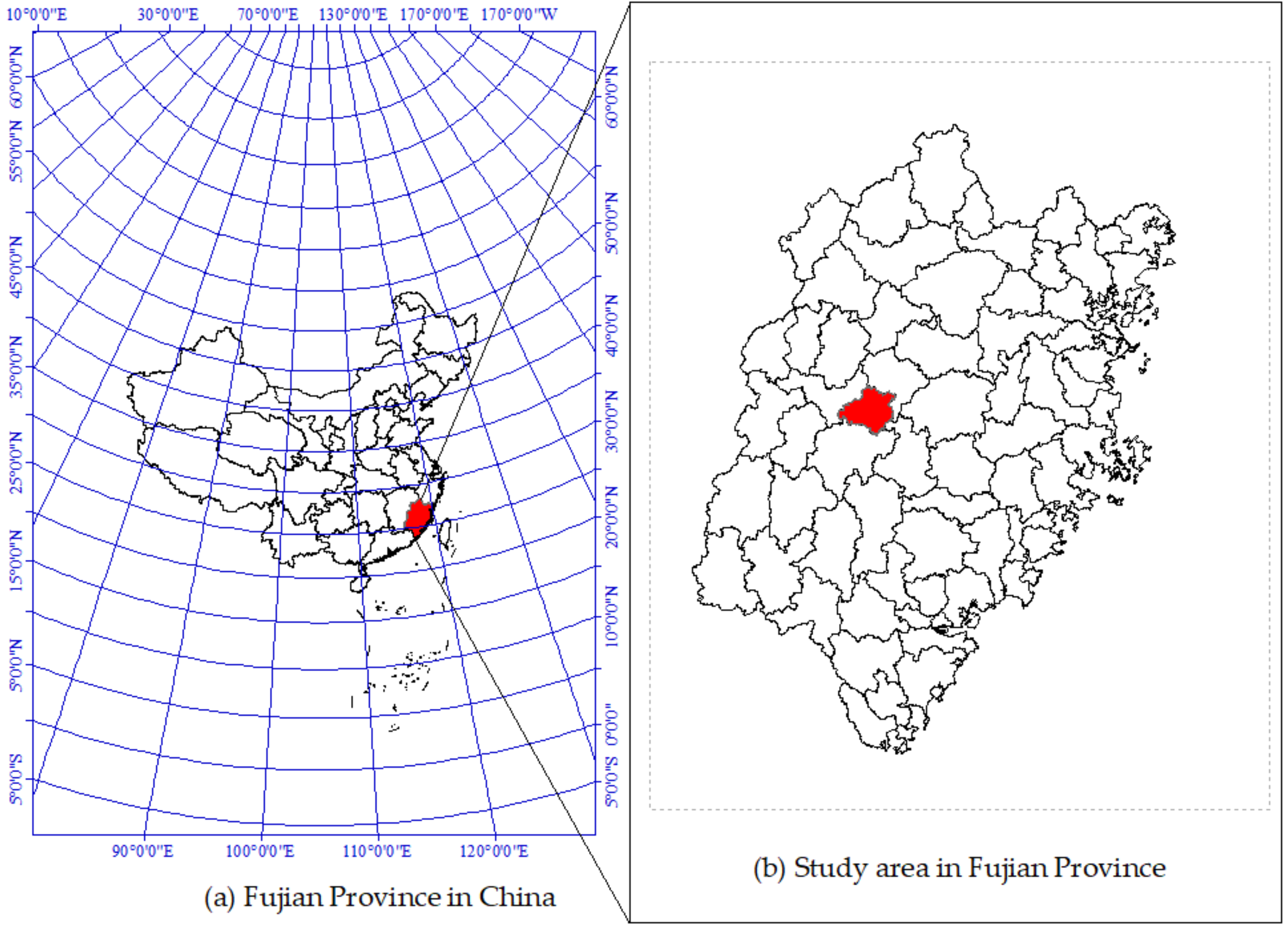
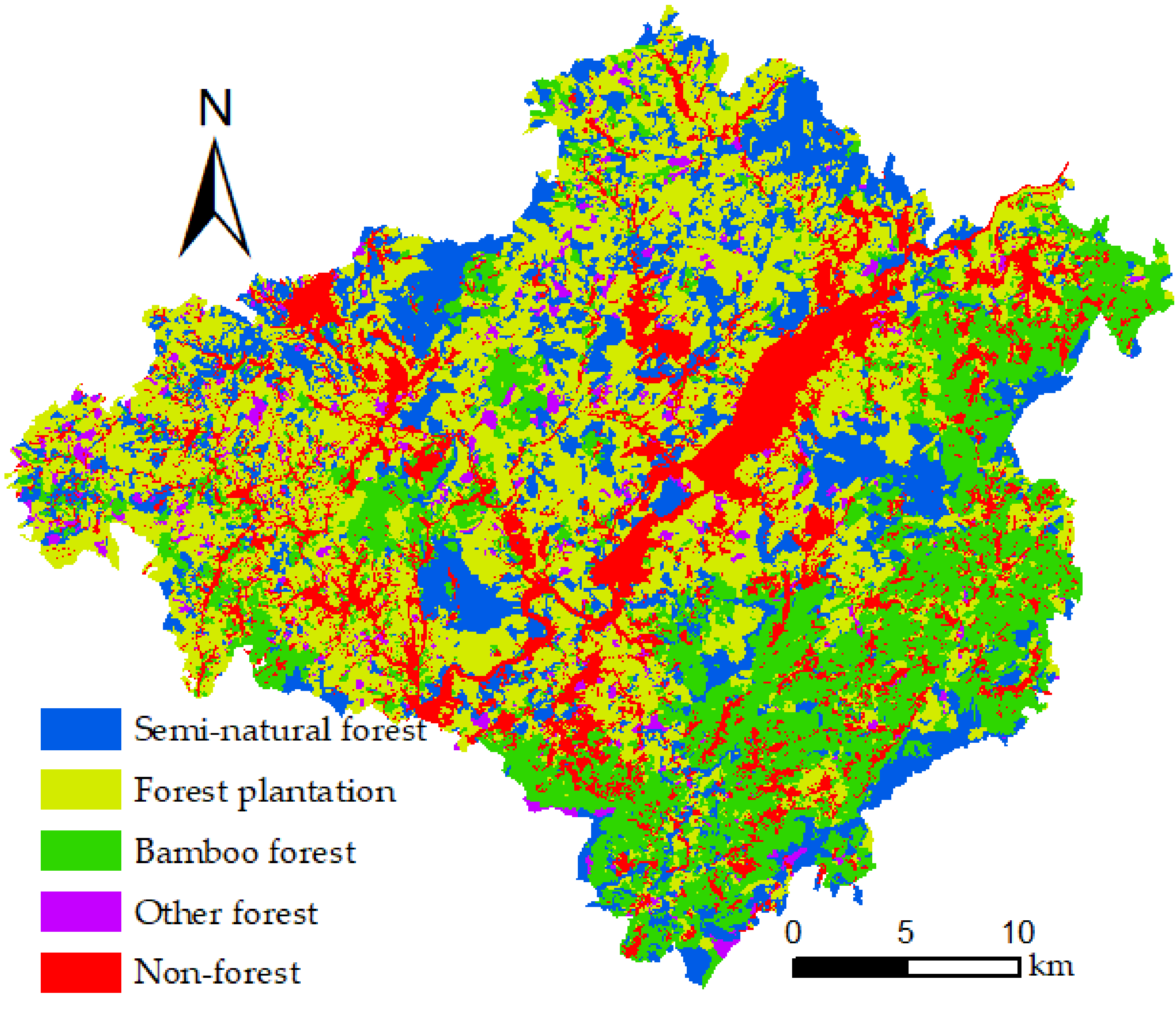
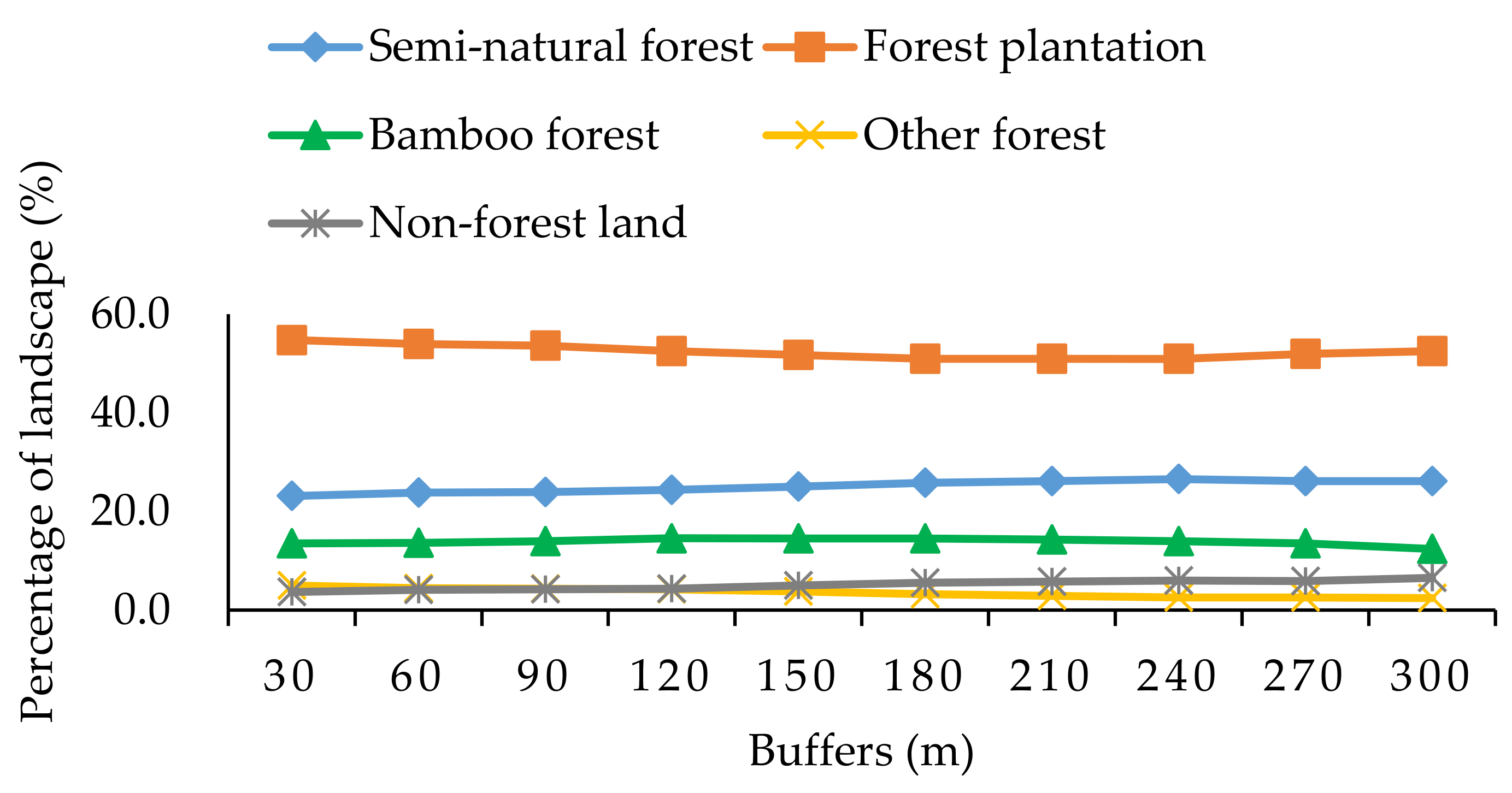
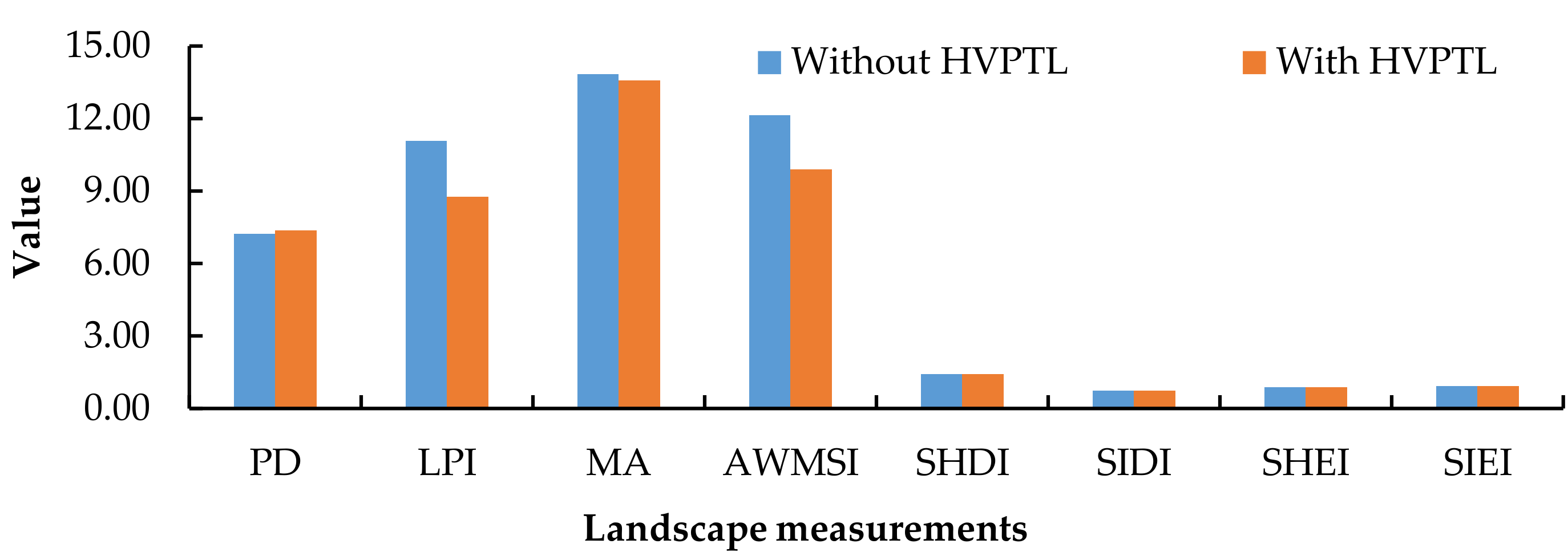
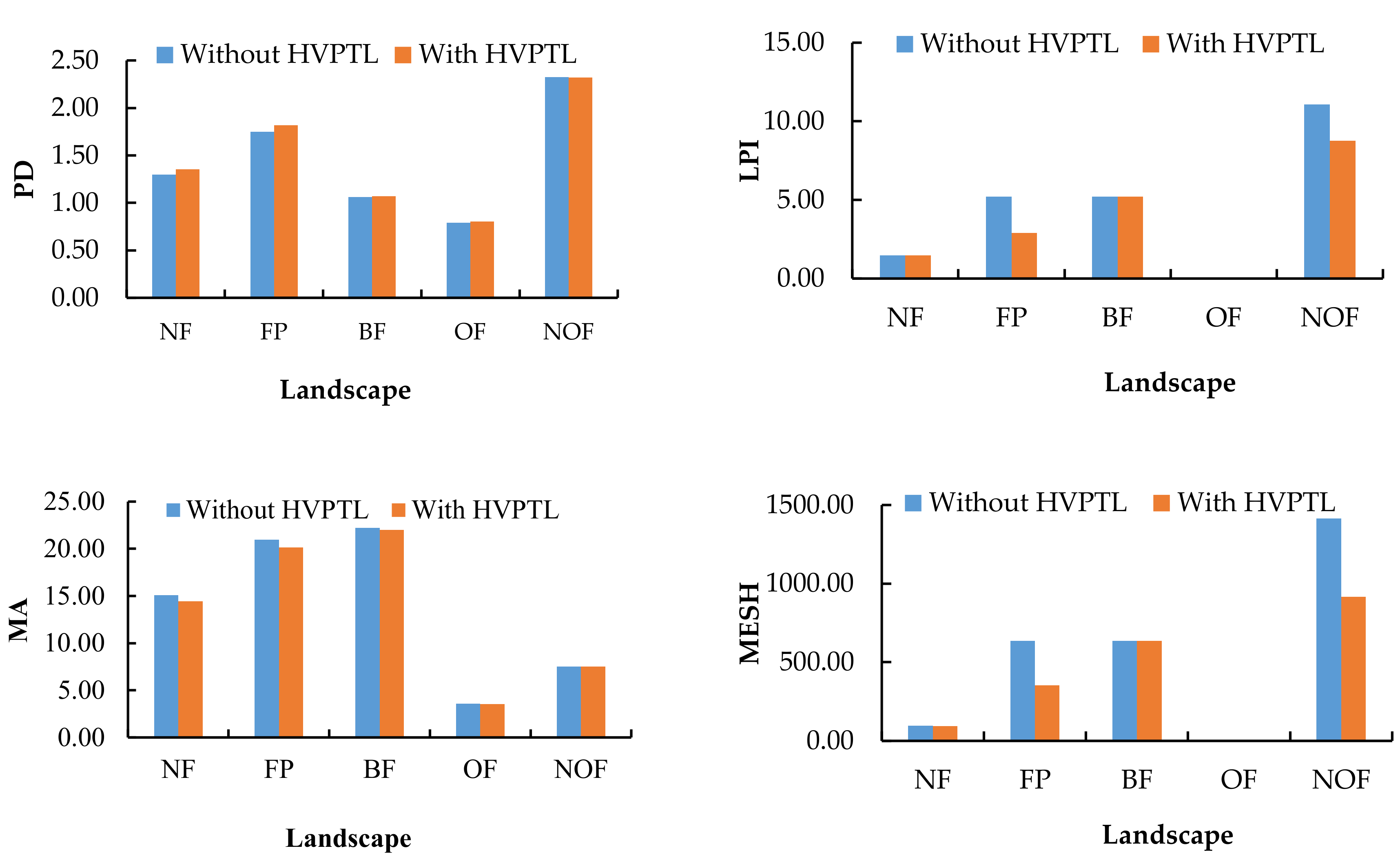
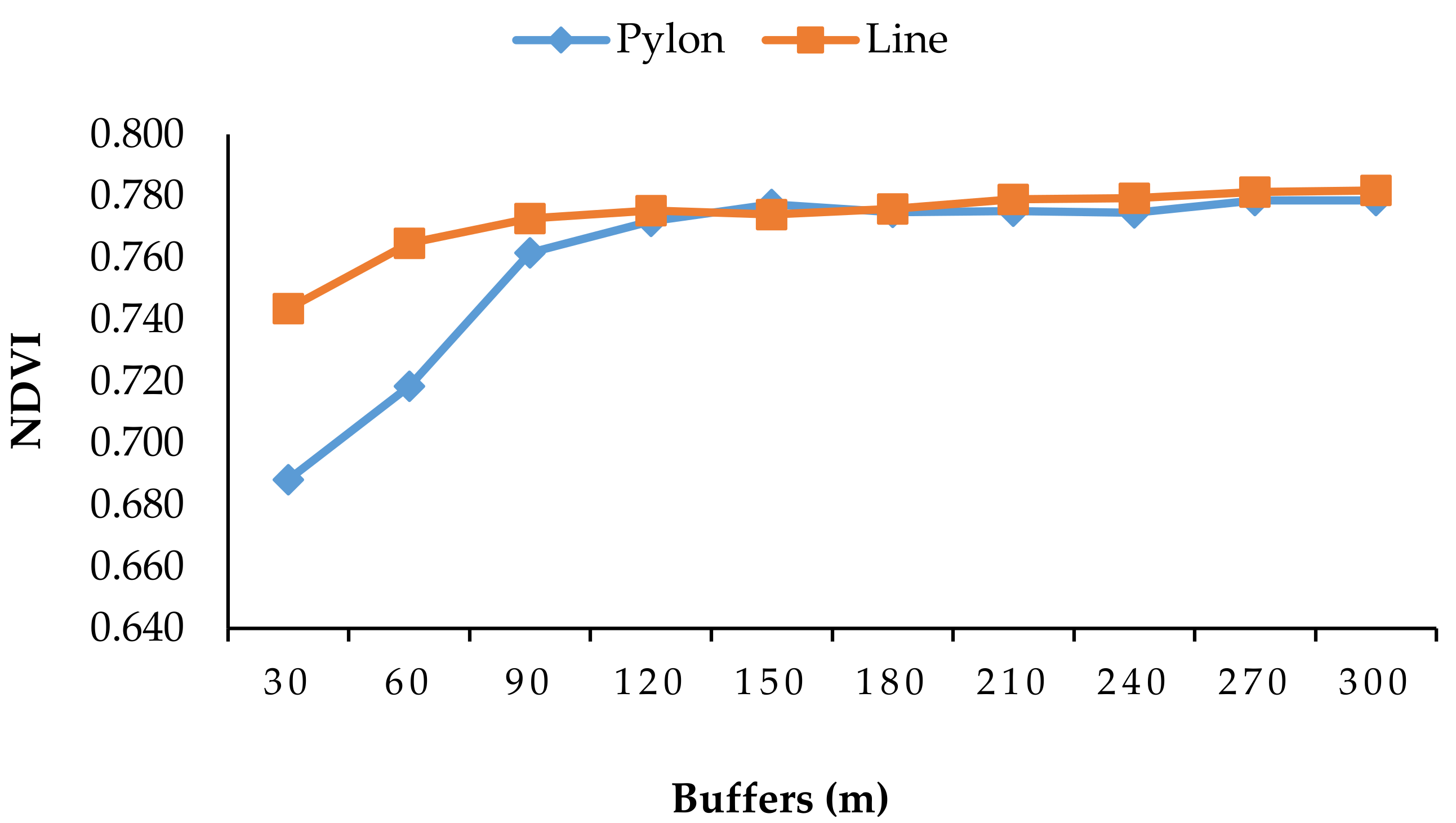


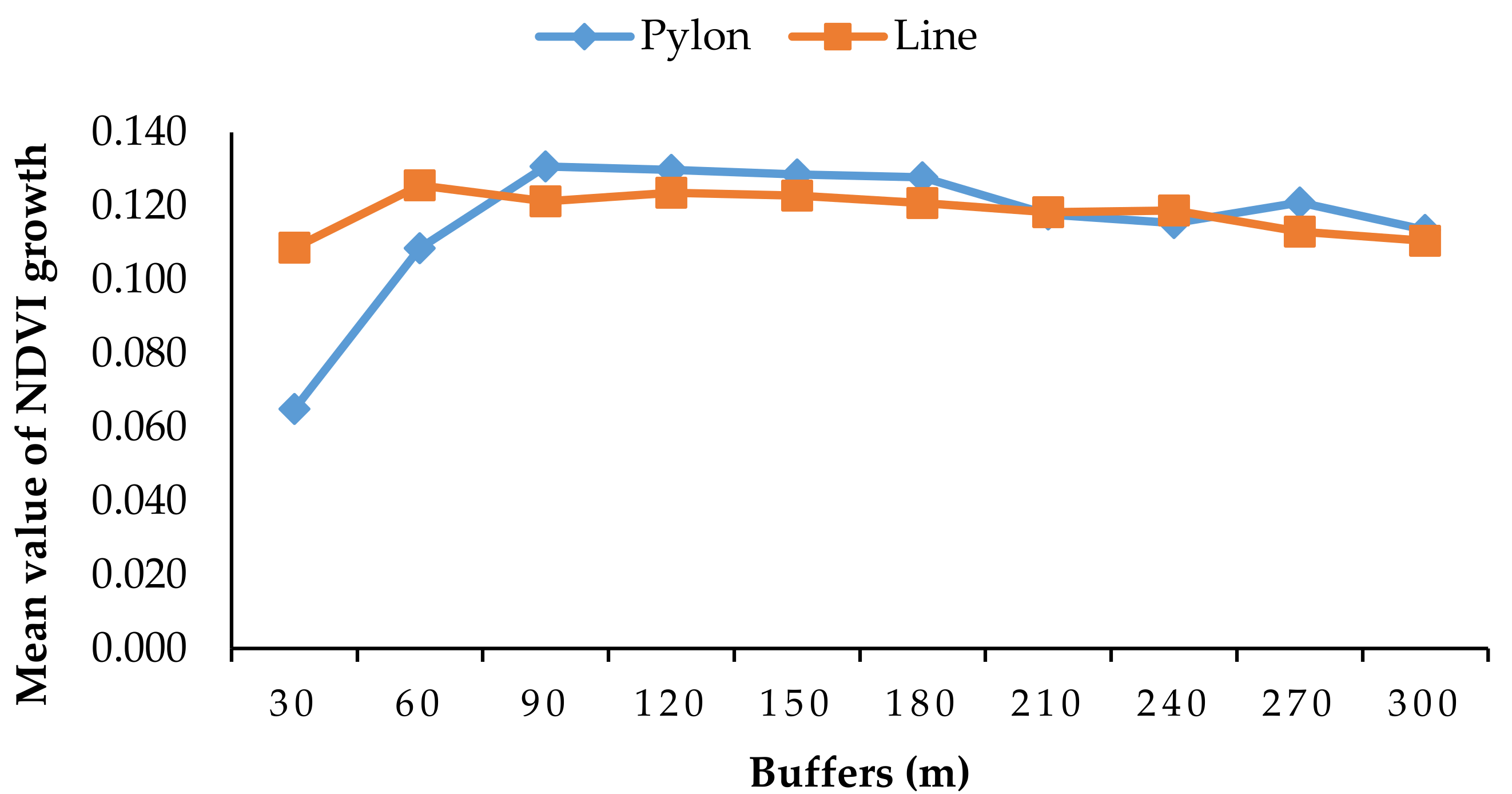
| Landscape Classes | Description |
|---|---|
| Semi-natural forest | Forests that have re-grown after a timber harvest for a long enough period without human interference. |
| Forest plantation | Artificial mixed-species forest and artificial pure-species forest with artificially planted. |
| Bamboo forest | Phyllostachys heterocycla, Dendrocalamopsis oldhami and D. latiflorus, etc. |
| Other forest | Including shrubwood land, and sparse forest land, etc. |
| Non-forest land | Including construction land, cultivated land, water land, burned area, and barren land, etc. |
| Landscape Metrics | Formula | Descriptions |
|---|---|---|
| Patches density (PD) | Level: C/L; To describe the degree of fragmentation for a certain landscape type or a total landscape. | |
| Largest patch index (LPI) | Level: C/L; To provide a simple measure of dominance. It quantifies the percentage of total landscape area comprised by the largest patch. | |
| Mean patch area (MA) | Level: C/L; To describe the degree of fragmentation for a certain landscape type or a total landscape. | |
| Effective mesh size (MESH) | Level: C; To indicate the probability of two points chosen randomly in a region will be connected. | |
| Area-weighted mean shape index (AWMSI) | Level: L To evaluate the shape complexity for the total landscape. | |
| Shannon’s diversity index (SHDI) | Level: L To estimate the level of landscape diversity. SHDI is somewhat more sensitive to rare patch types than SIDI. | |
| Simpson’s diversity index (SIDI) | Level: L It is another popular diversity measure. Compared with SHDI, the value of Simpson’s index represents the probability that any two pixels would be different patch types. | |
| Shannon’s evenness index (SHEI) | Level: L To describe the even distribution among patches. Evenness is the complement of dominance of certain patch. | |
| Simpson’s evenness index (SIEI) | Level: L Similar as SHEI. |
© 2019 by the authors. Licensee MDPI, Basel, Switzerland. This article is an open access article distributed under the terms and conditions of the Creative Commons Attribution (CC BY) license (http://creativecommons.org/licenses/by/4.0/).
Share and Cite
Li, X.; Lin, Y. Do High-Voltage Power Transmission Lines Affect Forest Landscape and Vegetation Growth: Evidence from a Case for Southeastern of China. Forests 2019, 10, 162. https://doi.org/10.3390/f10020162
Li X, Lin Y. Do High-Voltage Power Transmission Lines Affect Forest Landscape and Vegetation Growth: Evidence from a Case for Southeastern of China. Forests. 2019; 10(2):162. https://doi.org/10.3390/f10020162
Chicago/Turabian StyleLi, Xiang, and Yuying Lin. 2019. "Do High-Voltage Power Transmission Lines Affect Forest Landscape and Vegetation Growth: Evidence from a Case for Southeastern of China" Forests 10, no. 2: 162. https://doi.org/10.3390/f10020162
APA StyleLi, X., & Lin, Y. (2019). Do High-Voltage Power Transmission Lines Affect Forest Landscape and Vegetation Growth: Evidence from a Case for Southeastern of China. Forests, 10(2), 162. https://doi.org/10.3390/f10020162




